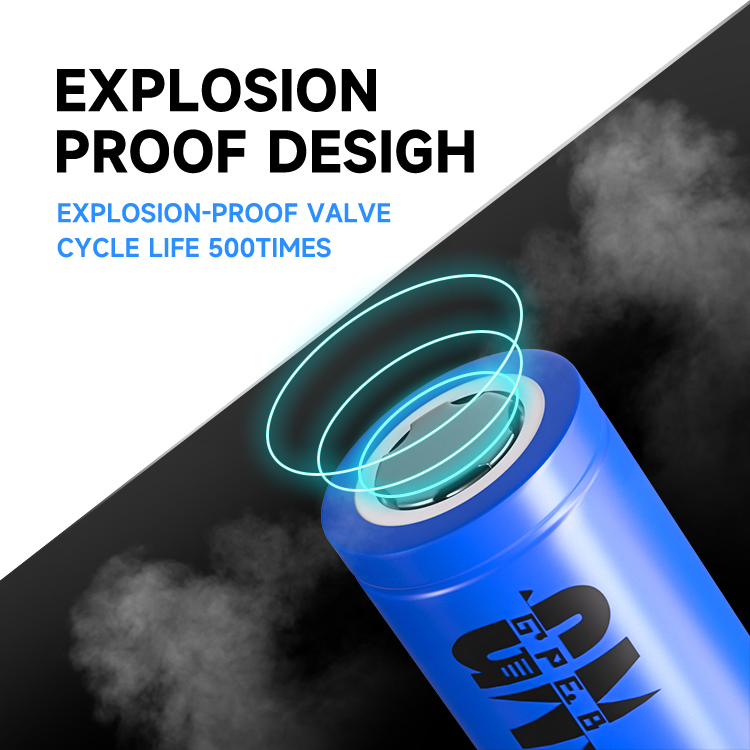


What voltage should be used to charge a 3.7v lithium battery
2018-06-01 82191 views
Generally,
a 3.7v lithium battery needs a "protection board" for overcharge and
overdischarge. If the battery does not have a protection board, it can
only use a charging voltage of about 4.2v, because the ideal full charge
voltage of a lithium battery is 4.2v, and the voltage exceeds 4.2v.
Damage to the battery, while charging in this way, it is necessary to
monitor the condition of the battery at all times.
5v can be used
if there is a protective board (4.8 to 5.2 can be used), the USB5v of
the computer or the 5v charger of the mobile phone can be used.
For
a 3.7V battery, the charge cut-off voltage is 4.2V, and the discharge
cut-off voltage is 3.0V. Therefore, when the open circuit voltage of the
battery is lower than 3.6V, it should be able to charge. It is best to
use the 4.2V constant voltage charging mode, so you don't need to pay
attention to the charging time. Charging with 5V is prone to danger of
overcharging.
1. Float charge. Refers to charging while working
online. This method is often used in backup power supply occasions. If
it is lower than 12 volts, it cannot be charged, and if it is too high,
it will affect the operation of the circuit. Therefore, when the
floating charge works, the voltage is 13.8 volts.
2. Cycle
charging. Refers to fully charging the battery to restore the capacity.
When fully charged, the charger is not disconnected for measurement.
Generally, it is around 14.5 volts, and the maximum does not exceed 14.9
volts. After disconnecting the charger for 24 hours, it is generally
around 13 volts to 13.5 volts. About 12.8 to 12.9 volts after a week.
The specific voltage value of different batteries is different.
The
usual lithium battery cell is 3.7v, the voltage is 4.2v when fully
charged, the nominal voltage after series connection is only 7.4v,
11.1v, 14.8v... the corresponding full voltage (that is, the no-load
output voltage of the charger) is 8.4v, 12.6v, 16.8v... cannot be 12v
integers, just like the interval of lead-acid storage battery is 2v,
full is 2.4v, correspondingly only the nominal 6v, 12v, 24v... full
voltage (The same is the output voltage of the charger) respectively
7.2v, 14.4v, 28.8v... I don't know what kind of lithium battery you are?
The
output of the charger is generally 5V, and 4.9 volts is also a
non-standard. If you want to use this charger to charge the battery
directly, it will definitely not work, but as long as it is charged by a
mobile phone or a dock, it has a control circuit inside. It will be
limited within the allowable range of the lithium battery, unless the
circuit is damaged, don't worry about this
The usual lithium
battery cell is 3.7v, the voltage is 4.2v when fully charged, the
nominal voltage after series connection is only 7.4v, 11.1v, 14.8v...
the corresponding full voltage (that is, the no-load output voltage of
the charger) is 8.4v, 12.6v, 16.8v... cannot be 12v integers, just like
the interval of lead-acid storage battery is 2v, full is 2.4v,
correspondingly only the nominal 6v, 12v, 24v... full voltage (The same
is the output voltage of the charger) respectively 7.2v, 14.4v, 28.8v...
I don't know what kind of lithium battery you are?
18500
batteries are widely used in cylindrical lithium batteries, and can be
used in electronic fields such as electronic cigarettes, toys, security,
and vehicles.
Enterprises with mature cell technology include
BAK, Tiansheng, Huayuebao and other manufacturers, with stable
performance. The definition rule of its model is: For example, 18650
type refers to a battery with a diameter of 18mm and a length of 65mm,
and a 18500 battery with a diameter of 18mm and a length of 50mm, which
is a cylindrical battery.
Voltage: 3.6V (conventional universal
battery, used for electronic products and low-power electrical equipment
with a maximum discharge of 1C. Discharge conditions can be changed
according to the situation)
3.2V (power battery can be customized according to the situation)
Charging parameters: 4.2V
The
minimum discharge end voltage is generally: 2.75V, the maximum charge
end voltage: 4.20V (Sanyo, Samsung, Panasonic, Tiansheng TS/the latest
large-capacity 18500 charge end voltage is 4.35V)
Capacity: 3.6V lithium cobalt oxide current technology reaches 1900AMH (according to Tiansheng Weiye Technology Department)
Diameter: 18±0.2
Battery Specification Chart
Battery Specification Chart
The minimum discharge termination voltage is generally: 2.75V
18650 type lithium battery
Maximum
charge termination voltage: 4.20V (Sanyo, Samsung, Panasonic's latest
large-capacity 18650 charge termination voltage is 4.35V)
Height: 50±0.3
Edit common combination parameters
Combination method: ICR18500-4S2P
Nominal voltage: 14.8V
Output voltage range: 10~16.8v
Nominal capacity: 3000mAh
Standard continuous discharge current: 0.2C
The maximum continuous discharge current: 1C
Working temperature: Charging: 0~45℃
Discharge: -20~60℃
Product size: MAX35*54*83mm
Finished product internal resistance: ≤250mΩ
Lead type: national standard line UL1007/18#, line length 150mm
Protection parameters:
Overcharge protection voltage/4.25±0.025V per string
Over-discharge protection voltage 2.5±0.08V
Overcurrent value: 4~8A
The choice of charger[edit]
Standard
charging: The battery is first charged with a constant current of
0.5C5A (1.5A) to 4.2V, and then charged with a constant voltage of 4.2V
until the current decreases to 0.01C5A when the charging current
gradually decreases. The charging time is about 3 hours. There should be
no permanent damage to the rechargeable battery within 0~45°C.
Standard
discharge: After a fully charged 18500 battery is placed at an ambient
temperature of 20±5°C for 30 minutes, it is discharged to 6.0V at a
constant current of 0.2C5A, and the discharge time is about 5 hours.
Therefore, it is suitable to choose a 4.2V/1A lithium battery charger.